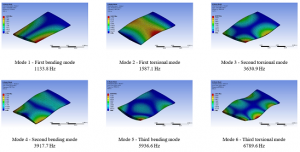 The RBF Morph Team will take part in the 46th edition of the Italian Conference AIAS 2017 that will be held in Pisa (Italy) 6-9 September, 2017.
The RBF Morph Team will take part in the 46th edition of the Italian Conference AIAS 2017 that will be held in Pisa (Italy) 6-9 September, 2017.
Three works about the different applications of RBF Morph technology will be presented:
913 – Ottimizzazione di forma mediante adjoint strutturale ed RBF mesh morphing
Adjoint solvers are acquiring nowadays a growing importance in shape optimization especially when dealing with fluid dynamic applications; their use for structural optimization is however still limited. In this work an optimization workflow based on the synergic use of a structural continuum-discrete adjoint variable solver and the commercial morpher RBF Morph is presented. The proposed method effectiveness is shown with two examples: a cantilever beam and a structural bracket.
910 – Radial Basis Functions mesh morphing FOR the analysis of CRACKS propagation (RBF4CRACKS)
The applicability of Fast Radial Basis Functions (RBF) for enabling mesh morphing on very large meshes is demonstrated in this paper exploiting state of the art tools for FEA (ANSYS Mechanical) and for advanced mesh morphing (RBF Morph ACT Extension). Proposed method is benchmarked using as a reference a circular notched bar with a surface defect. Reliability of fracture parameter extraction on the morphed mesh is first verified using as a reference literature data and ANSYS Mechanical tools based on remeshing: different crack shapes are achieved using the new geometry as a morphing target. Crack propagation workflow is then demonstrated showing the computed shape evolution for different size and shape of the initial crack.
911 – Fluid structure interaction analysis:vortex shedding induced vibrations

Fluid Structure Interaction (FSI) numerical modelling requires an efficient workflow to properly capture the physics involved. Computational Structural Mechanics and Computational Fluid Dynamics have to be coupled. Currently, there is a lack of monolithic solvers capable of tackling industrial applications with high fidelity requirements where the computational mesh can be comprised of hundreds of millions of cells. In this paper an efficient approach based on standard commercial tools is demonstrated.
For the details of our presentation you can refer to the AIAS Conference Program.
We look forward to see you in Pisa!
